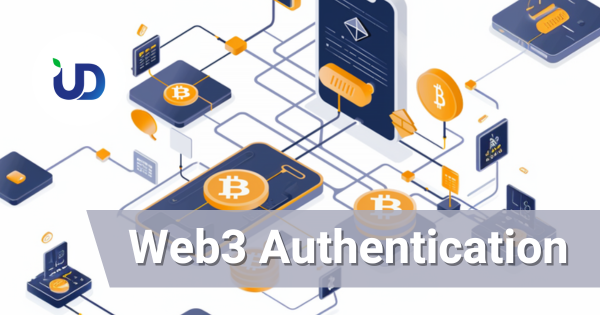Unlocking the Future of Logins: A Comprehensive Guide to Web3 Authentication
The way we authenticate ourselves online is undergoing a significant transformation. Traditional username-password combinations are riddled with security vulnerabilities and privacy concerns. Web3, the next iteration of the internet built on blockchain technology, offers a new paradigm for user authentication – one that empowers users and prioritizes security.
This article delves into the world of Web3 authentication, explaining its core concepts, benefits, and how it works. We'll also explore the various methods of Web3 authentication and the tools that make it possible.
Why We Need a New Authentication System
The current system of usernames and passwords has several drawbacks:
Centralized Control: Our login credentials are often stored on centralized servers, making them vulnerable to data breaches. Companies can misuse or sell our data without our knowledge.
Weak Security: Simple passwords are easily compromised, and even strong passwords can be vulnerable to phishing attacks.
Inconvenient User Experience: Remembering multiple passwords and dealing with password resets can be a hassle.
Web3 authentication addresses these issues by introducing a decentralized and user-centric approach.
Web3 Authentication: A Paradigm Shift
Web3 authentication leverages the power of blockchain technology to verify user identity. Here's what sets it apart:
Decentralized: There's no single point of failure, as user data isn't stored on a central server.
Self-Sovereign Identity: Users hold the keys (cryptographic credentials) to their digital identities.
Cryptographic Verification: User identity is verified using public-key cryptography, a highly secure method.
Fine-Grained Access Control: Users have granular control over what data they share with applications.
Benefits of Web3 Authentication
Enhanced Security: Cryptographic verification significantly reduces the risk of data breaches and unauthorized access.
User Control: Users own and manage their digital identities, deciding what information to share.
Improved Privacy: Users can choose to reveal only specific attributes about themselves to applications.\
Streamlined Logins: No more remembering passwords! Users can log in with their crypto wallets.
Frictionless Onboarding: Web3 authentication can simplify user onboarding for applications.
How Does Web3 Authentication Work?
The core concept of Web3 authentication revolves around digital wallets and cryptographic signatures. Let's break it down:
Crypto Wallets: These digital wallets act as your identity vault, storing your private keys and crypto assets. Popular options include MetaMask, Argent, and Rainbow.
Public-Key Cryptography: Each wallet has a public-key pair – a public key (everyone can see) and a private key (only you know).
Signing Messages: When you interact with a Web3 application, it might send a message (often a random string) for you to sign with your private key.
Verifying Identity: The application verifies the signature using your public key, confirming your control over the wallet and hence, your identity.
This process allows applications to verify your identity without needing your private key or any sensitive information.
Methods of Web3 Authentication
There are several ways Web3 applications can leverage crypto wallets for authentication:
WalletConnect: A universal protocol enabling connection between wallets and applications across different blockchains.
Social Login with Web3: Users can log in using existing social media credentials while retaining control of their data with a crypto wallet.
Passwordless Logins: Eliminates the need for passwords altogether, relying solely on wallet signatures.
Decentralized Identity (DID): A new standard for creating and managing user-controlled, interoperable digital identities on blockchains.
Tools for Web3 Authentication
Several tools and services make it easier for developers to integrate Web3 authentication into their applications:
Moralis: Provides an API for Web3 authentication, simplifying user login and data access.
Web3Auth: Offers a suite of tools for managing user identities and enabling social login with Web3.
Fortmatic: A user-friendly solution for integrating passwordless logins with Web3 wallets.
Firebase Authentication with Ethereum: Integrates Web3 authentication with the familiar Firebase platform.
These tools offer various features and cater to different developer needs. Choosing the right tool depends on your specific application and requirements.
Conclusion: Stepping into a Secure and User-Centric Future
Web3 authentication represents a significant leap forward in online identity management. With its focus on decentralization, security, and user control, it paves the way for a more secure and empowering digital experience. As the Web3 ecosystem continues to evolve, we can expect even more innovative and user-friendly methods of Web3 authentication to emerge.
UD is a leading blockchain and network security solution provider in Hong Kong
We are dedicated to assisting enterprises in advancing their businesses through innovative blockchain technology, ushering from Web 2.0 to Web 3.0
Take the lead and seize Web3 100x investment opportunities.
Learn about where to buy Web3 domain and what to buy with the UD team now.
What are Web3 Domains?
Unlike traditional domain names (like the ".com" you see at the end of most websites), Web3 domains are built on blockchain technology. Imagine… Continue Reading





